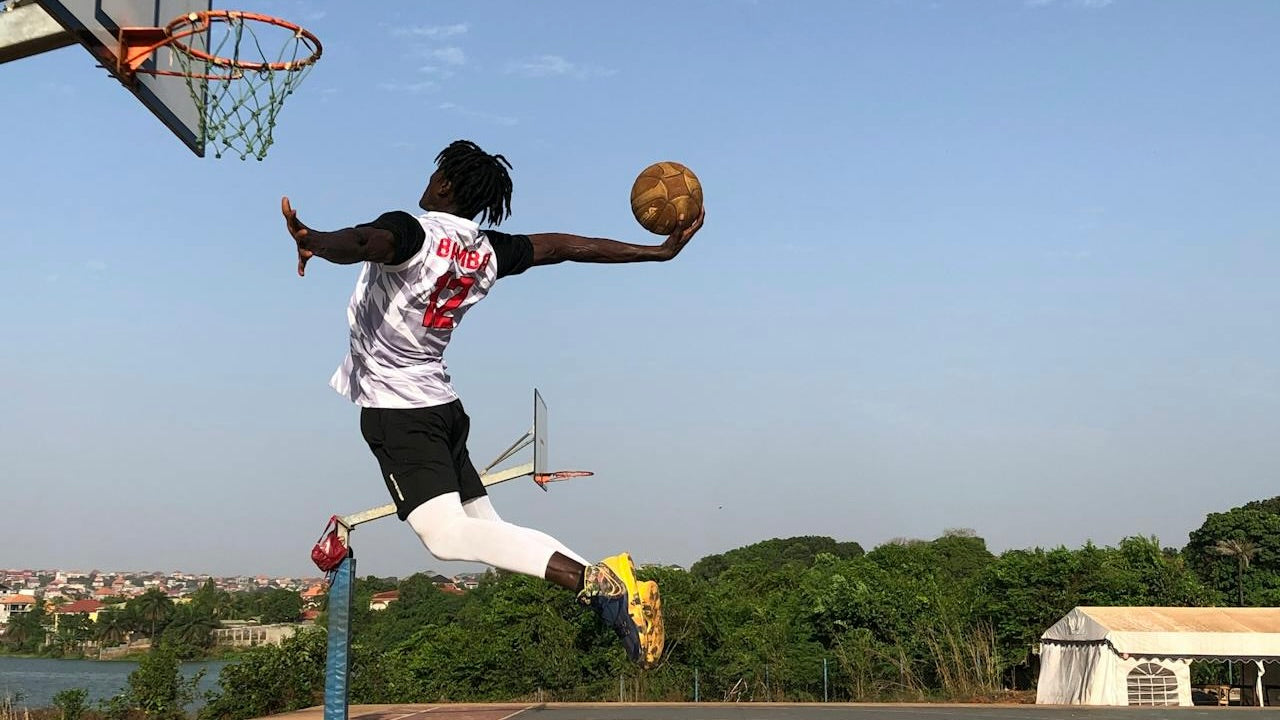The 100-meter dash, a quintessential sprinting event, dramatically showcases the difference in speed between the average person and an Olympian. While elite athletes like Usain Bolt and Elaine Thompson-Herah achieve breathtaking speeds, the average runner's pace is significantly slower.
Understanding these disparities provides a foundation for anyone seeking to improve their sprinting time. In this guide, we will explore effective sprint training techniques, running tips, and the best equipment for targeted exercises such as ab rollouts, push-ups, and glute ham curls that can help you shave precious seconds off your 100-meter dash. Whether you're aiming for a personal best or simply looking to boost your fitness, these insights will empower you to reach your goals with confidence.
Key Takeaways
- Understand the speed gap: While the average person runs the 100-meter dash in around 15-17 seconds, Olympians clock in at an incredible 9-10 seconds, highlighting the difference elite training makes.
- Boost your sprint speed: By focusing on explosive strength training, sprint intervals, and proper form, you can start shaving seconds off your 100-meter time.
- Consistency leads to results: Regular, focused sprint training and strength exercises will help you close the gap between your current performance and your personal best.

Average vs. Olympian Speed
Average Running Speed and Pace
The average running pace for the 100-meter dash varies significantly based on factors such as age, fitness level, and experience.
Typically, a recreational runner might finish the 100 meters in about 15 to 18 seconds, translating to an average running speed of roughly 20 to 24 kilometers per hour. This contrasts starkly with the world record held by elite Olympian Usain Bolt, who completed the 100 meters in a staggering 9.58 seconds, achieving speeds of up to 37.6 kilometers per hour.
Understanding the average mile pace can also provide valuable insights into one's running performance. For instance, recreational runners' average mile time often reflects their fitness level and training intensity. By focusing on enhancing elements such as reaction time, starting block technique, and maintaining top speed, recreational runners can improve their average running speed.
Recognizing your current average pace and setting achievable goals are essential steps to tracking progress and remaining motivated. These insights will help you improve both short sprint distances and extended runs over time.

Olympian Speed and World Records
Olympian speed in the 100-meter dash is nothing short of extraordinary. The world record, held by Usain Bolt, is an impressive 9.58 seconds, a feat achieved at the 2009 World Athletics Championships. This record-breaking performance highlighted Bolt's unparalleled acceleration and top speed. Similarly, on the women's side, Florence Griffith-Joyner set the world record of 10.49 seconds in 1988, a mark that still stands today.
These athletes demonstrate superior reaction times, explosive starts from the blocks, and an ability to maintain maximum speed over the entire race. Training for such performances involves a combination of sprint training, strength conditioning, and precise running techniques.
Aspiring sprinters looking to emulate Olympian speed should focus on enhancing their physical capabilities and refining their form. Understanding the mechanics behind these world records can inspire athletes to push their boundaries and improve their own sprinting times.

Effective Sprint Training Techniques
Running Tips from Professional Coaches
Professional coaches emphasize several key running tips to improve your sprinting performance.
First, focus on your starting block technique. A powerful and explosive start can set the tone for the entire race. Coaches suggest practicing reaction drills to improve your response time when the race begins.
Next, work on maintaining proper form throughout the sprint. Keep your head neutral, shoulders relaxed, and arms pumping efficiently. Your stride should be powerful but controlled, avoiding overstriding, which can lead to slower speeds and increased risk of injury.
Incorporate strength training exercises like squats and lunges to build the muscles essential for sprinting. Core stability is also crucial; exercises like planks and ab rollouts can improve your balance and overall control.
Lastly, include flexibility and mobility drills in your routine. Stretching regularly can enhance your range of motion and reduce muscle stiffness, allowing for more fluid and efficient movement. Following these tips from professional coaches can significantly improve your sprinting technique and overall performance.

Innovative Workout Routines
Innovative workout routines can add variety to your training and help in improving your sprinting performance. One effective routine is the High-Intensity Interval Training (HIIT). This involves short bursts of intense running followed by brief recovery periods. HIIT can boost your cardiovascular endurance and increase your speed.
Another useful routine is plyometric training, which includes exercises like box jumps, bounding, and squat jumps. These exercises improve explosive power, essential for sprint starts and maintaining top speed.
Incorporating resistance bands into your workouts can also be beneficial. Exercises like resisted sprints can help build strength and improve acceleration.
Additionally, using tools like the slant board for squats and calf raises can enhance lower body strength and flexibility.
Finally, focus on compound movements like reverse lunges and cossack lunges. These exercises target multiple muscle groups, improving overall strength and stability. By integrating these innovative routines into your training, you'll be better equipped to shave seconds off your 100-meter dash time.
Exercises to Improve Sprinting Time
Incorporating Key Exercises
Incorporating key exercises into your training regimen can significantly improve your sprinting time. Start with ab rollouts, which strengthen your core muscles, enhancing stability and power transfer during sprints. A strong core helps maintain proper form and reduces the risk of injury.
Push-ups are another essential exercise. They build upper body strength, crucial for effective arm movement during sprints. Strong arms contribute to overall speed and momentum.
Glute ham curls target the hamstrings and glutes, which are vital for explosive starts and maintaining top speed. Adding these to your routine can help boost your acceleration and endurance.
Reverse lunges are great for improving balance and strengthening the legs. They mimic the motion of sprinting, making them highly effective for runners.
Mountain climbers and Cossack lunges improve agility, flexibility, and lower body strength. These exercises ensure that your muscles are well-rounded and capable of handling the demands of sprinting.
By incorporating these key exercises, you can enhance your strength, agility, and overall sprinting performance.
Creating a Balanced Training Routine
Creating a balanced training routine is crucial for improving your sprinting time. A well-rounded program should include a mix of strength training, sprint drills, and flexibility exercises. Start with a dynamic warm-up to prepare your muscles and joints for the workout ahead. Incorporate exercises like high knees, butt kicks, and leg swings to increase blood flow and mobility.
Strength training should focus on both the upper and lower body. Include compound movements such as squats, lunges, and deadlifts to build powerful legs. Don't neglect the upper body; exercises like push-ups and pull-ups enhance arm drive and overall sprinting mechanics.
Sprint drills, including short sprints and interval training, should be a staple in your routine. These drills improve your speed, reaction time, and running form.
Finally, integrate flexibility and mobility work through static and dynamic stretching. This helps prevent injuries and ensures that your muscles can handle the stress of sprinting.
By creating a balanced training routine, you can address all aspects of sprinting performance, leading to improved times and reduced injury risk.

FAQs
Is 12 mph fast for a human?
Running at 12 mph is considered quite fast for the average person. This speed translates to running a mile in 5 minutes, which is an impressive pace for recreational runners and even many amateur athletes. For context, elite marathon runners often sustain speeds close to this over the course of an entire marathon, but maintaining 12 mph for longer distances requires significant endurance and conditioning.
When comparing this to top sprinters, 12 mph is relatively slower, as Olympians like Usain Bolt can reach speeds well over 20 mph during the 100-meter dash. However, for most people, hitting 12 mph is a mark of excellent fitness and running capability.
If you aim to achieve or surpass this speed, focus on sprint training, strength conditioning, and improving your running form. With consistent effort, you can enhance your running pace and potentially reach or exceed 12 mph.

Can humans run 20 mph?
Yes, humans can run 20 mph, although it is a feat typically reserved for elite athletes and sprinters. The average person would find it challenging to reach this speed without specialized training and conditioning. Notably, top sprinters like Usain Bolt have exceeded 20 mph during their races, with Bolt's peak speed recorded at approximately 27.8 mph during his world record 100-meter dash.
Achieving such speeds requires a combination of explosive power, excellent running mechanics, and a highly efficient stride. Training to run at 20 mph involves sprint drills, strength training, and focus on form. Exercises that emphasize fast-twitch muscle fibers, such as plyometrics and resisted sprints, are particularly beneficial.
While it is an ambitious goal, with the right training and dedication, reaching or coming close to 20 mph is possible for individuals with above-average athletic ability and commitment.

What is the fastest 100m of all time?
The fastest 100-meter dash of all time was run by Usain Bolt, who set the world record at 9.58 seconds during the 2009 World Athletics Championships in Berlin. This remarkable achievement shattered previous records and showcased Bolt's extraordinary athletic capabilities. Bolt's performance included a peak speed of approximately 27.8 mph, making him the fastest man in history.
On the women's side, Florence Griffith-Joyner holds the record with a time of 10.49 seconds, set at the 1988 U.S. Olympic Trials. This record has stood the test of time and remains unbeaten to this day.
These world records highlight the pinnacle of human sprinting performance. Achieving such speeds requires not only genetic predisposition but also years of rigorous training, perfect technique, and optimal physical conditioning. These records continue to inspire athletes worldwide to push the boundaries of speed and athletic excellence.









































Leave a comment
This site is protected by hCaptcha and the hCaptcha Privacy Policy and Terms of Service apply.